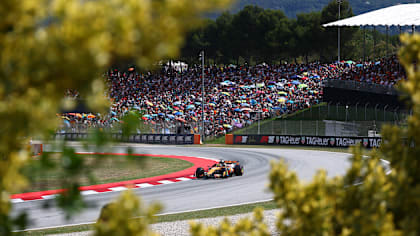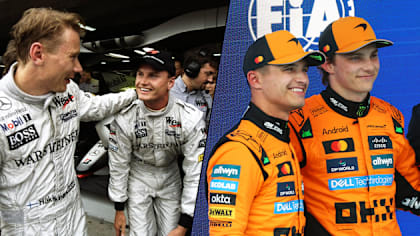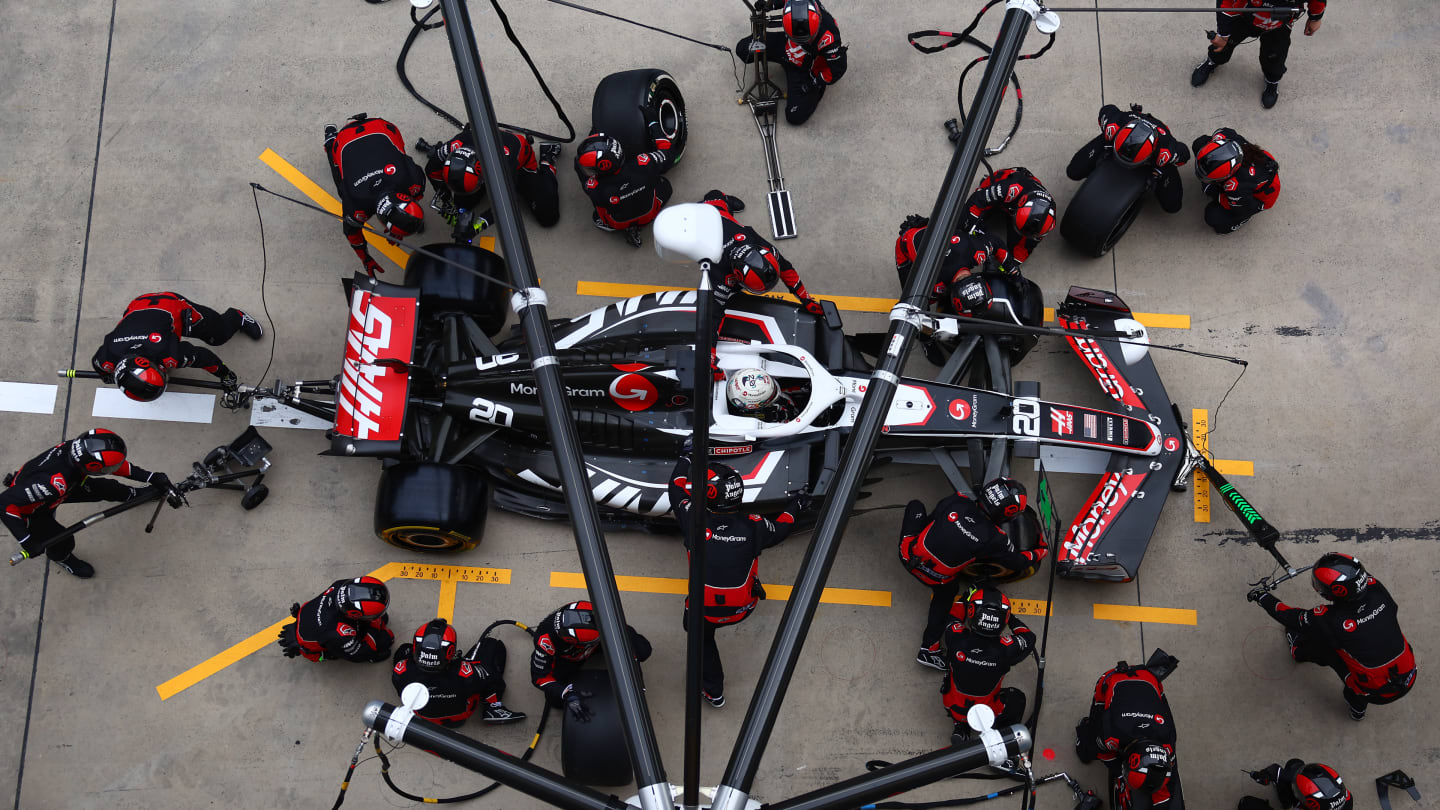
30 May - 01 June
Feature
‘We’re punching pretty hard’ – The story behind Haas’s strong start to 2024 and how they’re looking to the next generation

Share

To say that Haas have been on quite a journey since their arrival into Formula 1 back in 2016 is perhaps an understatement, with the team having experienced everything from points on their debut, through to no points at all in a challenging 2021 campaign, and more recently a major managerial change with the exit of Guenther Steiner as Team Principal.
However, while their recent past has had its share of ups and downs, their start to the 2024 season suggests that the present era is proving more prosperous for the squad. Currently sitting seventh in the constructors’ standings after a run of regular points results, there’s a “positive vibe” within the team according to Head of Performance Engineering Dominic Haines.
BEYOND THE GRID: Ayao Komatsu on his journey from Tokyo to Haas Team Principal
They have a keen eye on the future too, both on and off track, particularly when it comes to supporting young engineering talent and building their own workforce from within.
Ahead of the squad’s first home race of the campaign in Miami, Haines spoke to F1.com about the season so far, the memorable moments of his own journey in motorsport – including his time as a race engineer for Romain Grosjean during the Frenchman’s fiery Bahrain 2020 crash – and how Haas are supporting the F1 Engineering Scholarship to train the next generation of engineers.
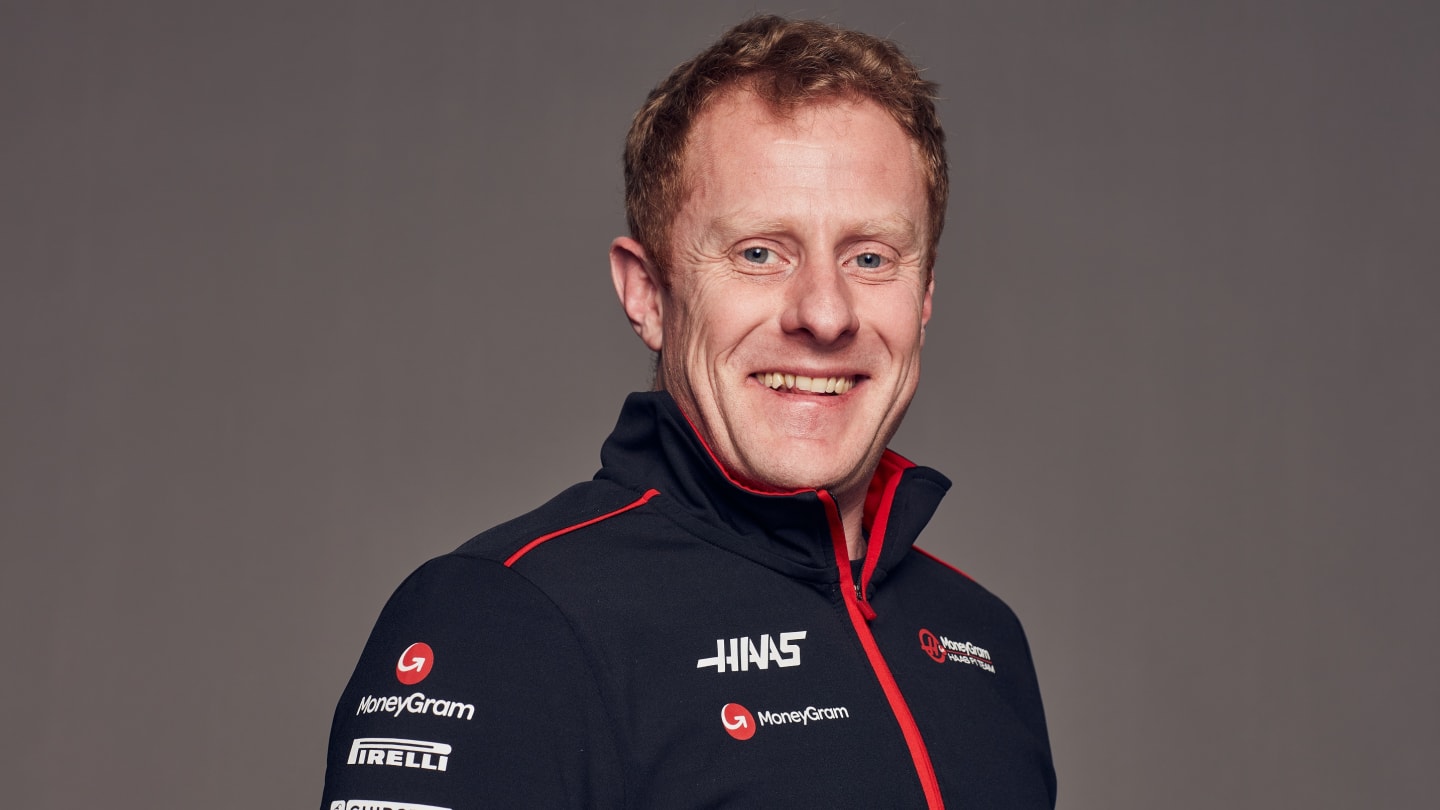
Dominic Haines is Head of Performance Engineering at Haas (MoneyGram Haas F1 Team)
Why Haas were ‘underplaying’ form ahead of the season
Haas were not far from the headlines in the weeks before the 2024 campaign began amid the aforementioned exit of Steiner, the man who had led the American outfit since their F1 debut. Former Head of Engineering Ayao Komatsu was promoted into the role and offered a realistic take on their prospects for the year ahead, stating that he expected the squad to be “towards the back of the grid, if not last” out of the gates in Bahrain.
And while the team did indeed leave the season-opener with no points, there were signs of promise with the pace of the VF-24. This became more evident in the races that followed, with the squad going on to score points at every subsequent weekend barring Japan, where Nico Hulkenberg narrowly missed out on a top-10 result.
Is this performance surprising? Haines explains: “For us, we knew over winter what our lap time difference was going to be from all of our wind tunnel work. I think, as you will have seen last year, we tended to be quite quick in qualifying and then we'd fall backwards in the race.
“We were pretty confident where we'd be in qualifying, but what we really weren't sure [of] was where we'd be in the race. We spent an enormous part of winter trying to address our race pace situation. I think, if people followed closely, they’d have seen we were never really running low fuel, very few runs anyway.
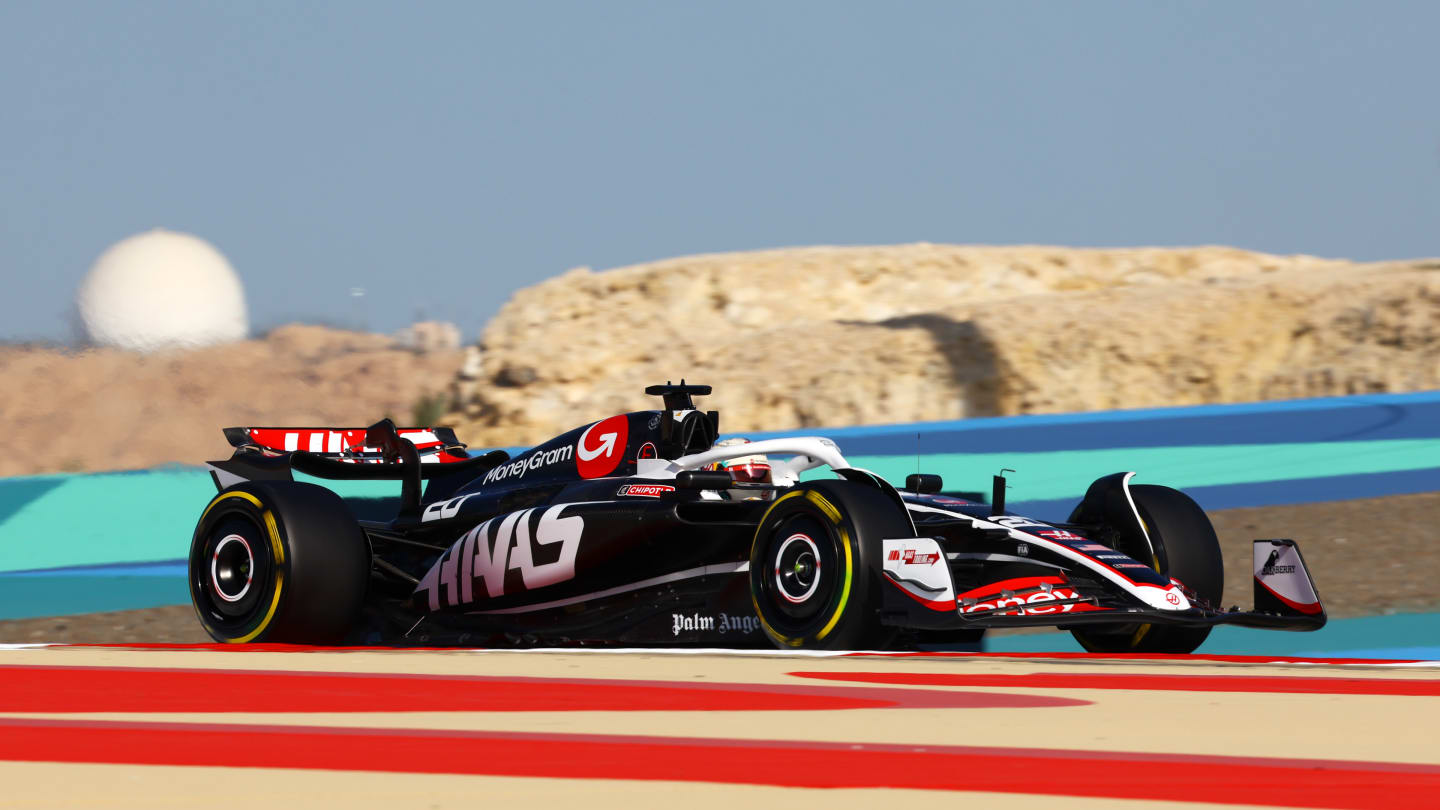
Haas were focused on improving their race pace throughout much of pre-season testing
“Partly due to the car and partly the way it's driven and set up, we think we’ve now got to a point where we can race very well, certainly at a pace that's similar to qualifying, and that has been very positive inside the team.
"I think underplaying it [beforehand] was really where we thought we'd be in the race. Maybe we’re not overperforming [as such], but executing the race properly, if you like. Everybody's very happy about that. It's a very positive vibe here now.”
Haines also credits the willingness of Hulkenberg and Kevin Magnussen to get onboard with what the team were trying to focus on during pre-season testing, as well as praising their recent examples of teamwork.
“Right from the start of this year, they've been really, really good,” Haines says of the current line-up, which will change in 2025 following the news that Hulkenberg will switch to Kick Sauber. “They really bought into what we were trying to achieve.
“When we talked about winter testing, we sort of threw away what we'd done and what lots of other people do – lots of low fuel running, lots of testing – and said we are just focusing on how we get this car to race properly, which for them probably meant lots of quite dull long runs!
“They were both very onboard [and] totally bought in with what we were trying to do, so that really helped. And then you see it in the races, like the race in Saudi, what we did [with the teamwork]. How they they're willing to do that is just fantastic, and it means [that], as a team, we benefit. They work together very, very well, and it just makes everybody's life so much easier.”
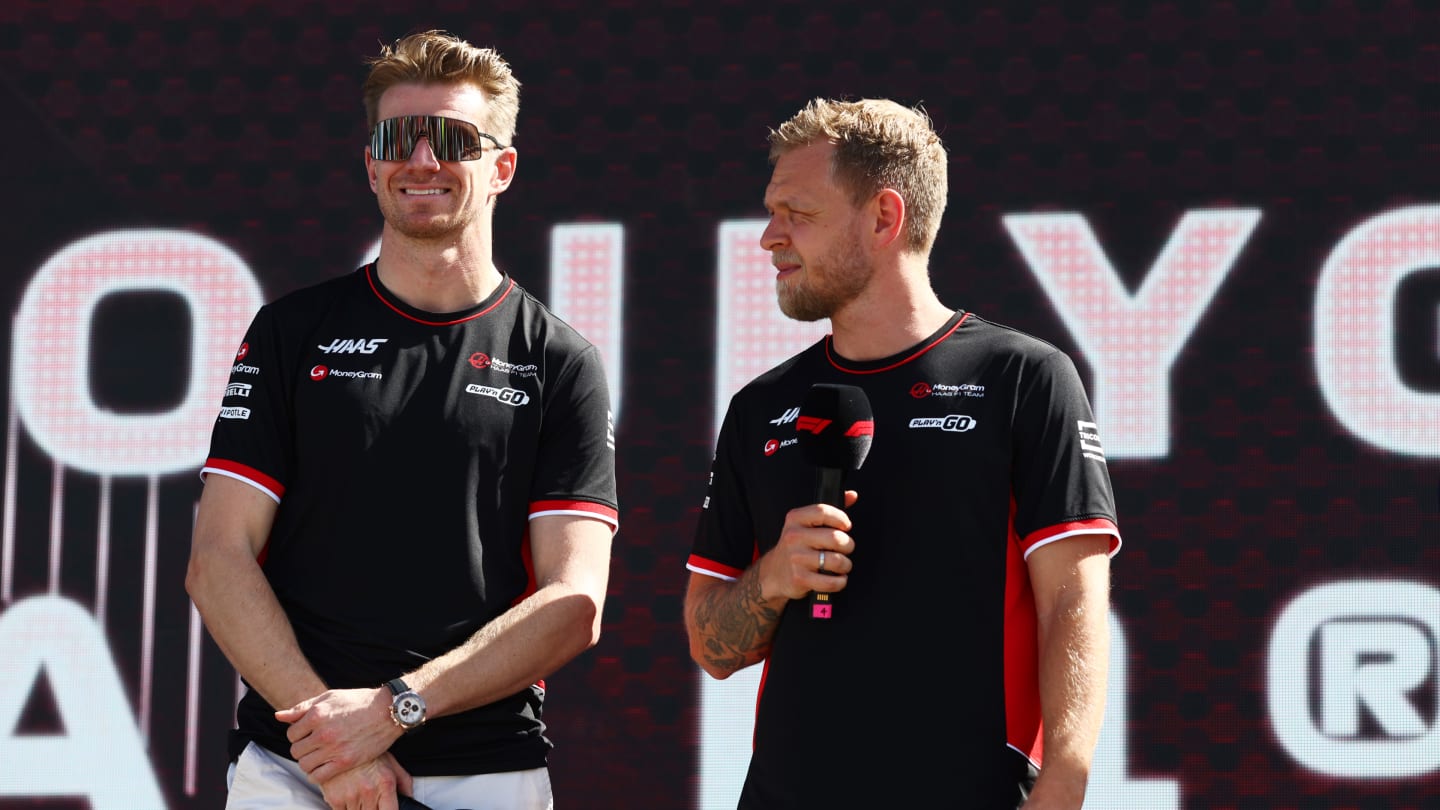
Hulkenberg and Magnussen have been praised for their displays of teamwork
How a good – or bad – result affects ‘everybody’ in the team
The drivers might be in one of the most public-facing roles of the team but, like the rest of the field, Haas has of a number of employees to whom the squad’s results mean just as much. A look at the faces of the engineers and mechanics when the cameras switch to the team’s garage after a good performance – or, on the opposite end of the spectrum, a bad outing – makes that clear.
Haines acknowledges that, from an engineer’s perspective, the results have a “big influence on everybody” in the team, adding: “It really makes a difference when you come in on Monday and it's been a good weekend – we bagged some points, it makes it all worthwhile.
“We're a small team. We’re punching pretty hard for the size that we are. Everybody is working flat out. Everybody has really devoted a lot to the project and the team and what we're trying to achieve.
READ MORE: Komatsu reveals area where Haas ‘weren’t functioning as a team’ in previous seasons
“It’s not just a job. Going racing on Sunday and getting a result is what motivates most people, if not all, to do what they do. Otherwise, you wouldn't be here – you’d just think, ‘this is insane’, and go and get a job somewhere else! There are far easier ways to earn money than doing this. People do it because they love it.”
This is something that Haines knows all too well. After working in a range of engineering roles over the years in Formula 1 – including strategist and race engineer – he now oversees different departments with a focus on the engineering side of the race team as well as the modelling and R&D groups in Banbury.
“The main role is to gather up all the work that those groups are doing to make sure everything's coherent and everybody's working on the same targets, and then give the race team a guideline of what we want to achieve for the race weekend as a whole, whether that’s about set-ups, new parts, fixes, procedural changes – anything that we need to implement,” says Haines.
“When we come back from a race we’ll review it. Then it's my job to take all of the feedback that I get from the various groups and make sure the subsequent work is all to address the main problems.”

A Formula 1 team's results have an impact on the whole squad, not just the championship standings
Working with the next generation
Haines and the team are helping other aspiring engineers by working with the F1 Engineering Scholarship, a programme that supports students from underrepresented groups through higher education.
Founded in 2021, the scholarship programme was set up by Formula 1 to address some of the barriers to entering higher education experienced by those groups, and covers the entire cost of tuition plus living expenses for the full duration of their degree. Run with participating universities in the UK and Italy, students undertake work experience with an F1 team and have access to workshops and mentoring.
WATCH: The vital impact of the F1 Engineering Scholarship Programme
Last summer, Haas welcomed their first scholar from the programme on placement. Sean Mata initially worked on the R&D side of the team before being given the opportunity to pursue a particular area of interest.
Haines says of the work that Sean was involved with: “[He was involved in a] broad project where he had a bit of design work, a bit of proper experimentation doing some testing, and then he had the opportunity to look at results and try and refine. It was a test procedure that we were doing in the R&D lab.
“He did that, but it was clear once we met him that his true interest was probably more on the software development side. We do lots of that, so we moved him out of the R&D group and put him into the vehicle science group.
F1 Engineering Scholars Welcome Event
“He did lots of modelling work with them, which was useful for them as well as for him. We wanted to make sure Sean got what he wanted from it, but also to try and expose him to other bits of engineering that he may not have known about.”
Being involved with the Scholarship was a positive experience for both team and scholar, according to Haines.
“It was definitely rewarding,” he says. “You have somebody who's never been in industry properly see what the reality is like, so that was good.
READ MORE: F1 makes ‘significant progress’ in sustainability as first Impact Report released
“It's quite fun having somebody very keen and enthusiastic around the place who wants to learn lots. Some of the stuff he did we still use, so just in terms of work it was useful having him here, for sure.
“Everybody liked working with him and, for lots of people, if you're teaching somebody what you're doing, you also get some perspective on what you're doing yourself. It's very good to reflect on, so in that respect I think a lot of people got a lot from it.”
Haines concedes that offering support and opportunities to those from underrepresented groups is “essential”, adding: “We want clever, motivated people who want to work here. There's people who fit into that category across all ranges, and if people are missing out, that needs to be addressed. So yes, I think it's very important.”

Haas currently sit seventh in the constructors' championship after a run of regular points finishes
What does it take to become an engineer in Formula 1?
Haines admits that, with Haas being one of the smaller outfits on the grid, training people from within can be particularly beneficial.
“We take on graduates every year, and we take on junior people quite often,” he explains. “Being smaller and maybe not with quite the same appeal, unfortunately we do sometimes struggle to recruit very senior people. We often recruit juniors and train them up.
“And actually, over time, we’ve found that [process] very good. We have quite a lot of movement within our group, so we employ lots of juniors. We take time to train them, and they then end up filling senior roles, and that's actually coming on quite nicely now.
“The advantage is we get people who know exactly the role and how we work, so I think we do quite a lot for juniors here.”
But what are the qualities that an engineer needs to work in F1? From Haines’ perspective: “You need to be technically gifted, but beyond that, you just need to be very motivated and a fast thinker.
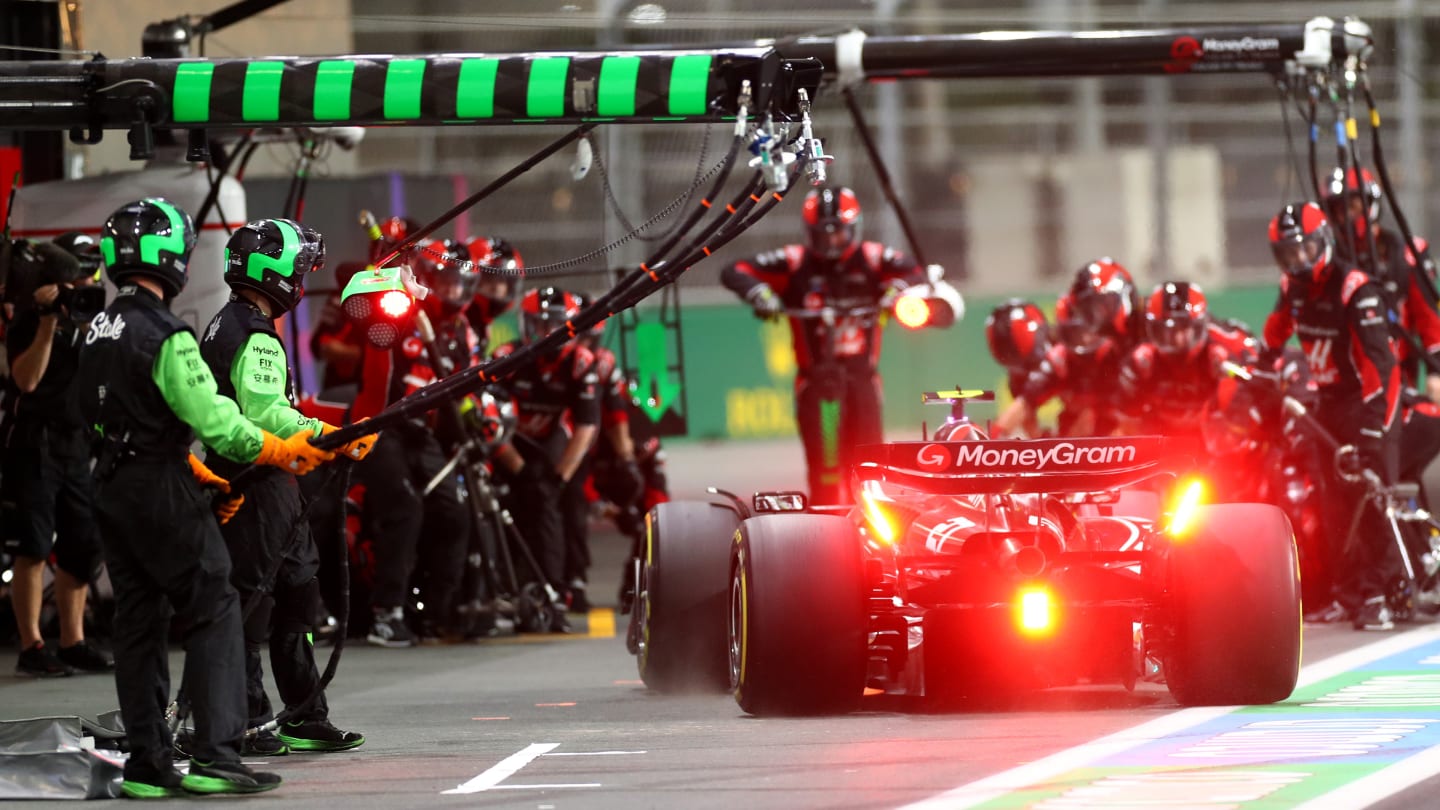
There are a wide range of job roles across engineering and mechanics in Formula 1, with the pit crew just one aspect of the race team
“I think having a very broad understanding of many things helps as well because [while] there’s some very focused work, you always have to keep it in the perspective. It’s very easy to get lost in the details, so a broad understanding really helps you in that respect.”
When it comes to advice to anybody aspiring to be an engineer in motorsport, Haines emphasises the importance of gaining experience alongside studying.
“The biggest thing I always tell people is to get experience – don't just get an engineering degree,” he advises. “When we put out roles, we have people apply with degrees, [but] you need to do something that makes you stand out, and for me, it's experience.
“It's a Formula 1 car, it's very special, but at the end of the day, it is just a car. Yes, it's very adjustable, but it works like any other car, so if you've worked in the lower formulas you have something more about you. It also shows the drive that you've got, because it's not easy to get the work, it’s not well paid, and you need to really want to do it.”
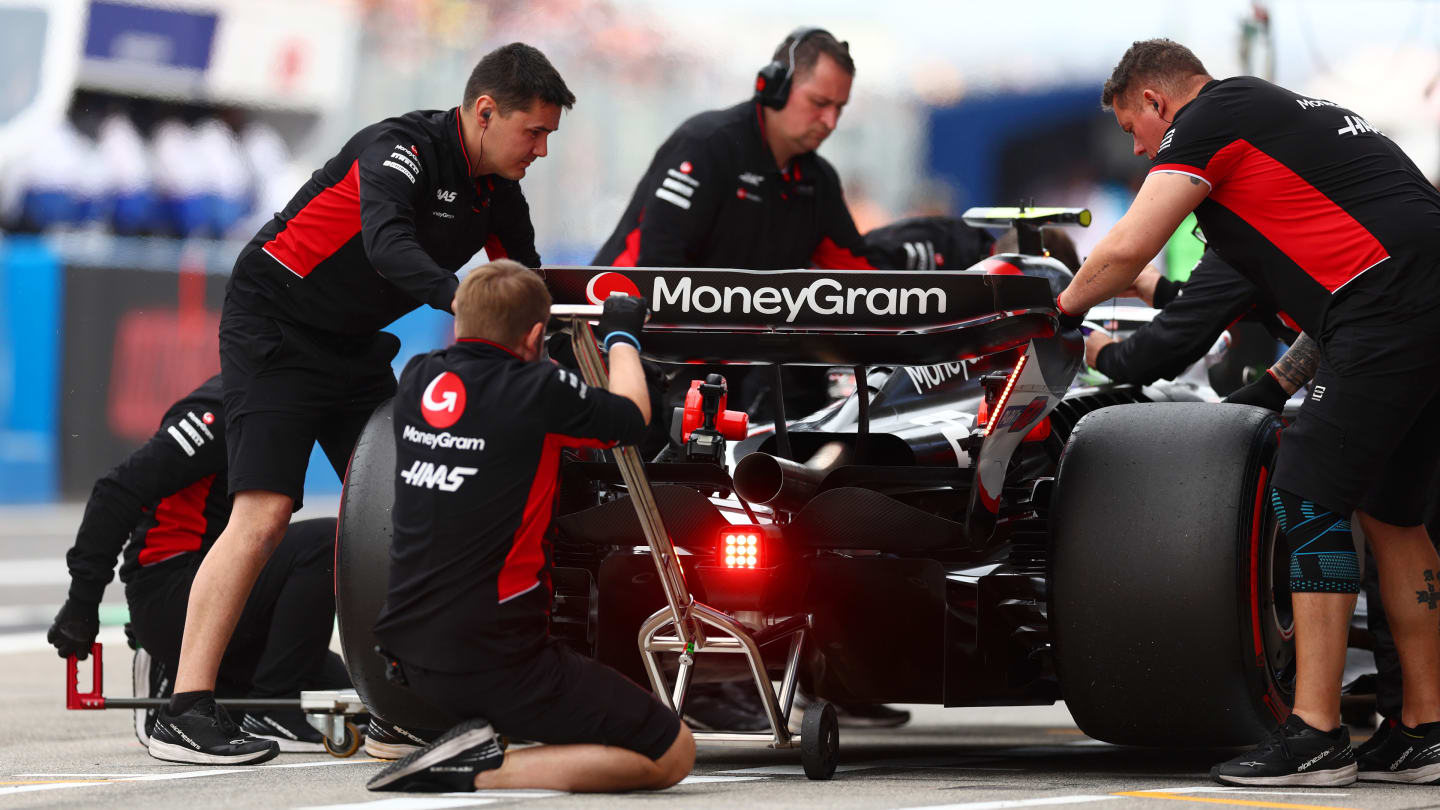
Haines believes that experience is crucial when it comes to working in F1
The journey towards working in F1 – and the highs and lows of the sport
Haines’ own journey in motorsport began by studying Mechanical Engineering before embarking on an MSc in Motorsport Engineering and Management. Reflecting on his path into F1, he acknowledges that it was a passion for motorsport in general that motivated him.
“I don't [think] Formula 1 particularly was the end goal. When I started I just loved motor racing,” he explains. "Whilst I was at university I worked for lots of local teams, doing all sorts of championships all over the UK, and just loved it. It’s really interesting, from an engineering point of view, in the problems that you face.
“I love the pace of it as well – you’re involved in lots of things, especially when you're working in small teams doing the lower formulas, and I just kept on doing it. I was doing a degree in Mechanical Engineering, and wanted to do more motorsport stuff, so I went to Cranfield and did their MSc course, and started looking for a job.
“At the time, Lotus – now Alpine – had a graduate scheme. That's how the journey into F1 started. I worked there for a long time before moving to Haas.”
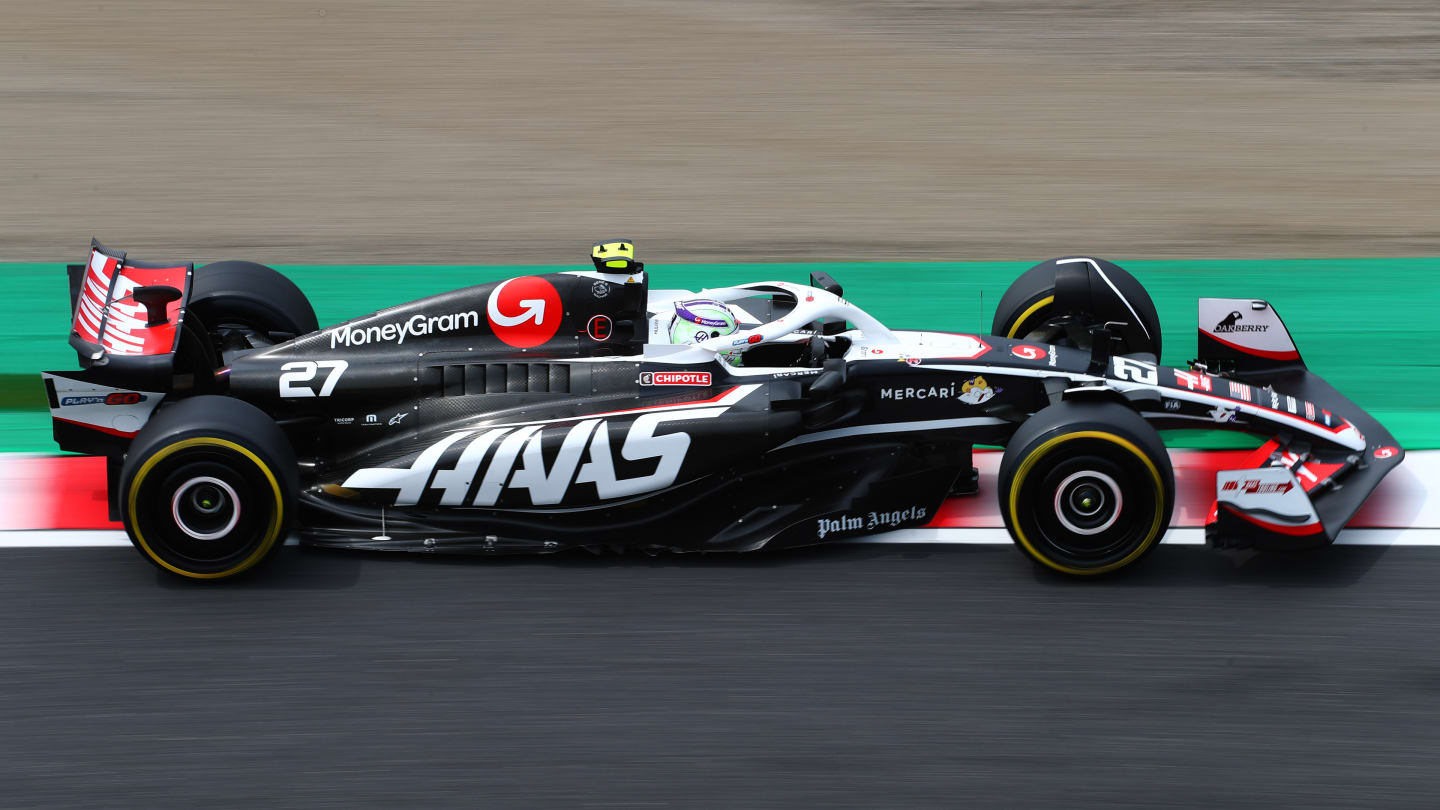
The Haas team have endured a few ups and downs since arriving into Formula 1 in 2016
Haines worked with the then-named Lotus squad between 2011 and 2016 before his switch to Haas. During his career he has witnessed highs and lows, with a particularly positive memory being the American team’s performance during their “very successful” 2018 season, when they finished fifth in the constructors’ championship.
“There's lots of highs during that season, like double points finishes, and it was really good,” he adds. “Seeing Kevin get pole in Brazil [in 2022], that was a very welcome boost for morale in what was quite a dark time.”
In contrast however, was the frightening crash suffered by Grosjean during the 2020 Bahrain Grand Prix, where Haines was acting as the Frenchman’s race engineer. Recalling the mixed emotions involved, he explains: “That was obviously a certain career low point which, once we realised he was okay, became a massive high. At the time [it] was a very difficult moment.”
Fortunately the team’s recent performance is something that Haines would add to his list of career positives.
“This year, how we've been able to race has been a very big morale boost. It's certainly a very big positive which we were concerned about coming into this year,” he details. "So that's lifted me a lot, certainly, and I think lots of others.”
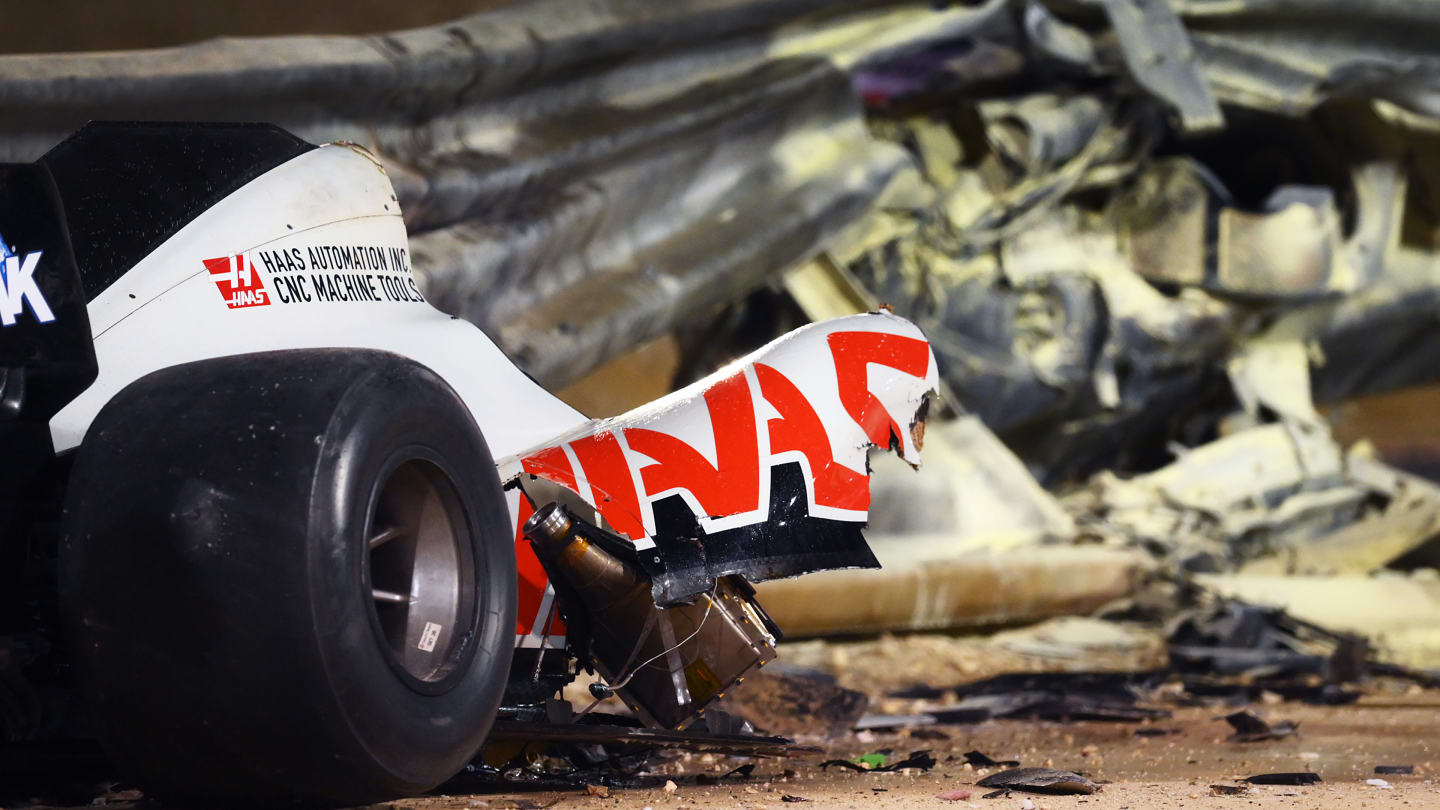
Haines was acting as Grosjean's race engineer when the Frenchman suffered his frightening crash at the 2020 Bahrain Grand Prix
Prospects for Miami
While they continue to keep an eye on the long-term, for now Haas are focused on the immediate future with the first of their home races fast approaching in Miami, where the second Sprint race of 2024 will also take place.
With that offering two potential opportunities to score points, can the squad continue their good run of form?
IT'S RACE WEEK: 5 storylines we're excited about ahead of the 2024 Miami Grand Prix
“I think for Miami, because it's a Sprint weekend, we know where we are competitive-wise,” says Haines. “You’ve got those top teams which are going to be hard to beat, so unless something strange happens, it's hard for us to score points in the Sprint.
“But in the race, we have a chance. We're racing with Alpine, with Sauber and those guys for those last points positions. If we execute well, do what we need to do, there's a chance. We have reasonable expectations – [we’ll] hopefully come away with a point or two.”
YOU MIGHT ALSO LIKE
News ‘We’ve had worse Fridays!’ – Verstappen feeling ‘more positive’ after practice in Spain despite wanting ‘better feeling’ from car
Live Blog AS IT HAPPENED: Follow the action from Spanish GP Qualifying as Piastri takes impressive pole
Feature FACTS AND STATS: A first front row lock-out in Spain for McLaren since 1998 as Piastri grabs biggest pole margin of the season
News Hamilton sets podium target for Spanish GP after moving ‘in the right direction’ with P5 Qualifying result






